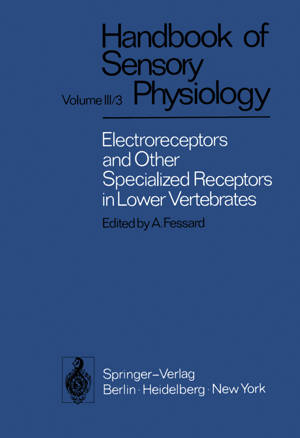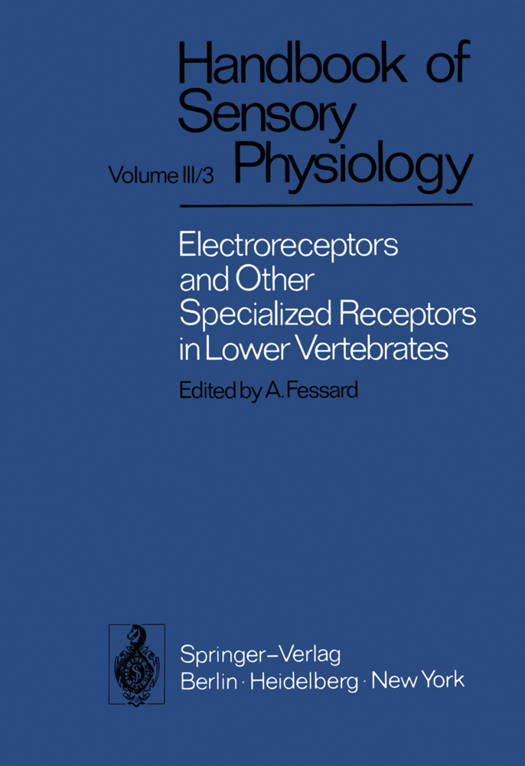
- Afhalen na 1 uur in een winkel met voorraad
- Gratis thuislevering in België vanaf € 30
- Ruim aanbod met 7 miljoen producten
- Afhalen na 1 uur in een winkel met voorraad
- Gratis thuislevering in België vanaf € 30
- Ruim aanbod met 7 miljoen producten
Zoeken
Electroreceptors and Other Specialized Receptors in Lower Vertrebrates
T H Bullock, A Fessard, R H Hartline, A J Kalmijn, P Laurent, R W Murray, H Scheich, E Schwartz, T Szabo
€ 145,19
+ 290 punten
Omschrijving
The originality of this volume is to reveal to the reader the fascination of some unfamiliar sensory organs that are sometimes ignored and often misunderstood. These receptors have only recently been identified and their functional specificity is in some cases still a matter for discussion. The four classes of sensory organs considered here differ widely from one another in many respects. One might even say that the only thing they have in common is that they belong to cold-blooded vertebrates. These classes are: 1. the directionally sensitive lateral-line mechanoreceptors of fishes and amphi- bians (Chapter 7); 2. the pseudobranchial organs of some teleosts, equipped with pressoreceptors and at least three other types of receptors (osmo- and chemoreceptors) (Chapter 8); 3. the infrared-sensitive pit organs of some snake families (Chapter 9); 4. the various kinds of electroreceptors found in several marine and freshwater fish families (Chapters 2 to 6). The first three classes of receptors mentioned above thus rate only one chapter each, whereas five chapters are devoted to the electroreceptors. Electroreception has aroused enormous interest among physiologists in specialties ranging from molecular biology to animal behavior. The resulting quantity of research and discussion fully justifies this disproportion. However, it cannot be denied that the contents of the volume must appear unbalanced and heterogeneous, yet it should not be perceived as a mere juxtaposition of particular and unrelated cases.
Specificaties
Betrokkenen
- Auteur(s):
- Uitgeverij:
Inhoud
- Aantal bladzijden:
- 336
- Taal:
- Engels
- Reeks:
Eigenschappen
- Productcode (EAN):
- 9783642659287
- Verschijningsdatum:
- 15/11/2011
- Uitvoering:
- Paperback
- Formaat:
- Trade paperback (VS)
- Afmetingen:
- 170 mm x 244 mm
- Gewicht:
- 553 g

Alleen bij Standaard Boekhandel
+ 290 punten op je klantenkaart van Standaard Boekhandel
Beoordelingen
We publiceren alleen reviews die voldoen aan de voorwaarden voor reviews. Bekijk onze voorwaarden voor reviews.








